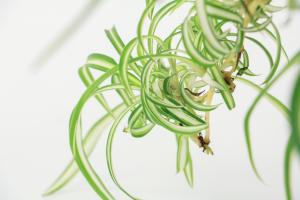How to Get Rid of Springtails in Potted Plants
Springtails are tiny insects that thrive in moist environments, such as soil in potted plants. They do not cause damage to the plant, but their presence can be unsightly and unsettling. To get rid of springtails in potted plants, follow these steps:
Step 1: Identify Springtails
Springtails are small insects that are typically less than 6mm long. They have a unique ability to jump high, earning them the name “springtail”. They are often found in moist soil, feeding on organic matter. Springtails are usually harmless to plants and humans, but a high population can indicate an underlying moisture problem that needs to be addressed.
Step 2: Dry Out the Soil
The first step in getting rid of springtails is to dry out the soil. Springtails need a moist environment to survive, so allowing the soil to dry out will make the environment less hospitable for them. Be careful not to overwater your plants, as this can create a perfect breeding ground for springtails.
Step 3: Remove Infected Soil
If the infestation is severe, it may be necessary to remove the infected soil. Carefully remove the plant from its pot and gently shake off as much soil as possible. Dispose of the infected soil in a sealed bag, and wash the pot with soap and water to remove any remaining contaminants. Refill the pot with fresh soil and replant the plant.
Step 4: Use Pesticides
If the infestation persists, you may need to use pesticides to get rid of the springtails. There are several options for pesticides, including organic and chemical-based solutions. Be sure to follow the instructions on the label carefully, and wear gloves and protective clothing when applying the pesticide. Keep the plant isolated from other plants until the infestation is completely cleared.
Step 5: Prevent Future Infestations
Once you have successfully eliminated the springtail infestation, it is important to take steps to prevent future infestations. Avoid overwatering your plants, as this creates a moist environment that is ideal for springtails. Keep the area around your plants clean and free of debris, as this can be a source of food for the insects. If you notice any signs of a new infestation, act quickly to prevent it from spreading.
With these steps, you can successfully get rid of springtails in your potted plants and prevent future infestations. Remember to always follow the instructions for any pesticides or other chemicals, and take care to protect yourself and your plants.

 how many times do yo...
how many times do yo... how many planted tre...
how many planted tre... how many pine trees ...
how many pine trees ... how many pecan trees...
how many pecan trees... how many plants comp...
how many plants comp... how many plants can ...
how many plants can ... how many plants and ...
how many plants and ... how many pepper plan...
how many pepper plan...































